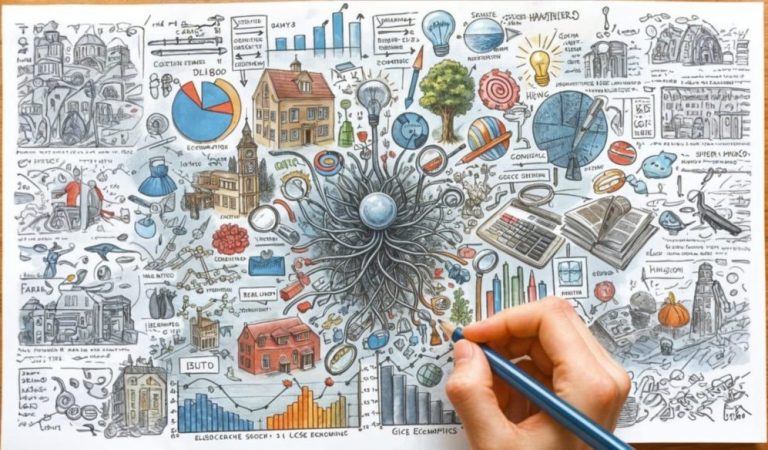
Characteristics of Living Organisms | Cambridge IGCSE Biology
[Please watch the video attached at the end of this blog for a visual explanation of this topic]
We are all aware that there are millions of different species living on Earth. So what exactly classifies something as “living” and another thing as “non-living”? Is it a characteristic that all living organisms have a brain? This cannot be a characteristic of living organisms because some species like plants do not have a brain. Hence we cannot call it a characteristic that is common to all living organisms. Then is it the fact that they breathe, the fact that they need food, or a combination of similar factors? If we consider all of these species, there are a set of characteristics that are common to all these living things, and that is what we will discuss under this article.
This lesson is one of the most fundamental lessons you will learn for Biology, and also one of the most important. This topic gets questioned every year, and while it is simple and easy to understand, the questions sometimes can confuse students, so it is a must to know the definitions of all these characteristics.
There are 8 characteristics of living organisms. They are…
- Movement
- Respiration
- Sensitivity
- Homeostasis
- Growth
- Reproduction
- Excretion
- Nutrition
An easy way to remember these would be to use the acronym MRS. H. GREN.
Movement
Definition:
It’s an action by an organism or part of an organism causing a change of position or place.
All organisms have the ability to move. Animals have the ability to move their limbs around, and plants, while their movement is a lot less pronounced, show movement in the way their shoot tips move towards light, roots grow downwards, etc.
Movement could refer to an action where the entire organism moves or it could be referred to a scenario where just a part of an organism is moving.
Ex:
The entire organism moves - a man walking from one place to another
A part of the organism moves - a dog wagging its tail
Respiration
Definition:
Set of chemical reactions th****at break down nutrient molecules in living cells to release energy using oxygen and releasing carbon dioxide.
As living organisms, we need energy in order to carry out our essential functions. Respiration is the set of chemical reactions that give us this energy.
Respiration is of two types as aerobic respiration and anaerobic respiration.
You must not get confused between breathing and respiration however, as they are two entirely different concepts. Breathing is a mechanical process where the air volume increases or decreases in the chest, whereas respiration is a biochemical reaction that releases energy.
Sensitivity
Definition:
Ability to detect or sense changes in the environment (stimuli) and to make appropriate responses.
All living organisms have five senses: sight, touch, taste, hearing and smell. The sense organs responsible for the senses in a human are eyes, skin, tongue, ears, and nose respectively.
Other organisms have certain different sense organs, but at the very centre of it, all living organisms have five senses. These organisms are able to sense changes in their environment using the said senses, and based on the changes (referred to as stimuli), they will be able to give appropriate responses to them.
Homeostasis
Definition:
A state of balance among all the body systems needed for the body to survive and function correctly.
It is because of homeostasis that living organisms maintain stability while adapting to conditions so they can survive. If homeostasis in an organism fails,then it would result in death.
When you get shivery in the cold, or sweat in the summer, that’s your body trying to maintain homeostasis.
Growth
Definition:
Permanent increase in size and dry mass by an increase in cell number or cell size or both.
All living things grow. Plants, animals, fungi, and even bacteria grow. Living organisms grow through an increase in cell number (number of cells increase) or the size of the cell may increase, or both these processes might occur. Both these will result in the permanent increase in size and dry mass of an organism.
If we consider an example, a plant cell swelling due to absorption of water is not growth as there is no permanent increase in size and dry mass. On the other hand, a human baby becoming a teenager over the course of time is growth because that is a permanent increase in size and dry mass.
Reproduction
Definition:
Reproduction is the process that makes more of the same kind of organism.
Reproduction is also another important characteristic of life exhibited by all living organisms. All living things reproduce to ensure the continuity of their species.
Reproduction is of two types: sexual reproduction and asexual reproduction.
Excretion:
Definition**:**
Removal from organisms of toxic materials, the waste products of metabolism (chemical reactions in cells including respiration) and substances in excess of requirements.
This definition of excretion talks about three types of materials:
- Toxic materials
- Waste product of metabolism (process which changes food and drink into energy)
- Substance that is in excess of requirements.
We remove these substances through urination, sweating, and exhaling. Species such as plants remove their waste via transpiration.
Nutrition
Definition:
Taking in materials for energy, growth or development, i.e. taking in of nutrients which are organic substances and mineral ions, containing raw materials or energy for growth and tissue repair,absorbing and assimilating them.
Therefore, nutrition is taking in food and converting it into energy or nutrients needed for survival. Nutrition for animals is simply eating. For plants, nutrition refers to how plants absorb nutrients from the soil or the environment.
What should you do next?
Make sure you study the definitions of these characteristics. Every single paper will have at least one question from this lesson, perhaps more.
Since Biology questions tend to get repeated, practise as many as you can find. Some questions can be found here as well, and you can time your answers to see if you can stick to the time limit given.
If you are struggling with IGCSE revision or Biology in particular, you can reach out to us at Tutopiya to join revision sessions or find yourself the right tutor for you.
Watch the video below for a visual explanation of the lesson and make sure to attempt the quiz once you’re done!
Written by
Tutopiya Team
Educational Expert
Related Articles

What’s Next After A-Levels? Figuring Out Your Next Step
Comprehensive guide and expert insights on educational topics for IGCSE, IB, and international curriculum students.

IGCSE Economics Revision Resources, Past Papers, and More
Master IGCSE Economics with essential revision resources & past papers. Ace your exams with global support. Ideal for IB & A-level students too.

Why Personalized Learning Beats Group Classes for IGCSE
Comprehensive guide and expert insights on educational topics for IGCSE, IB, and international curriculum students.


